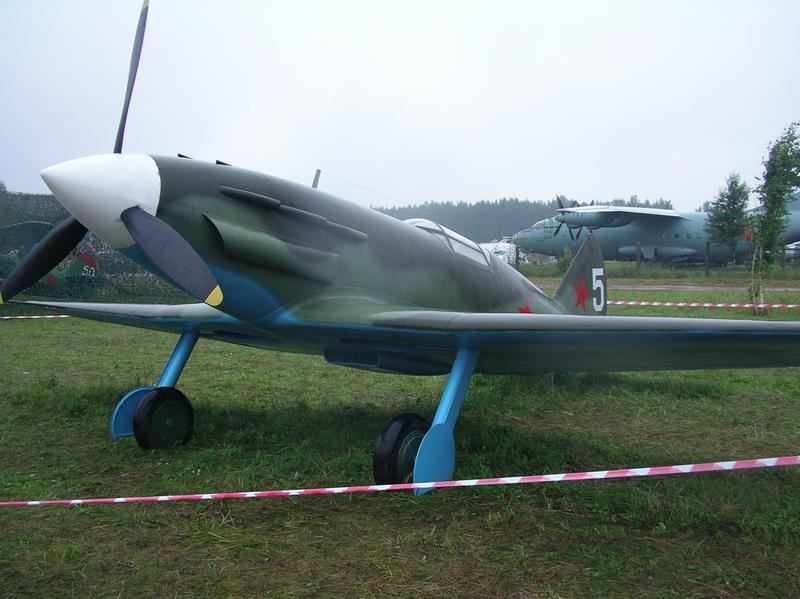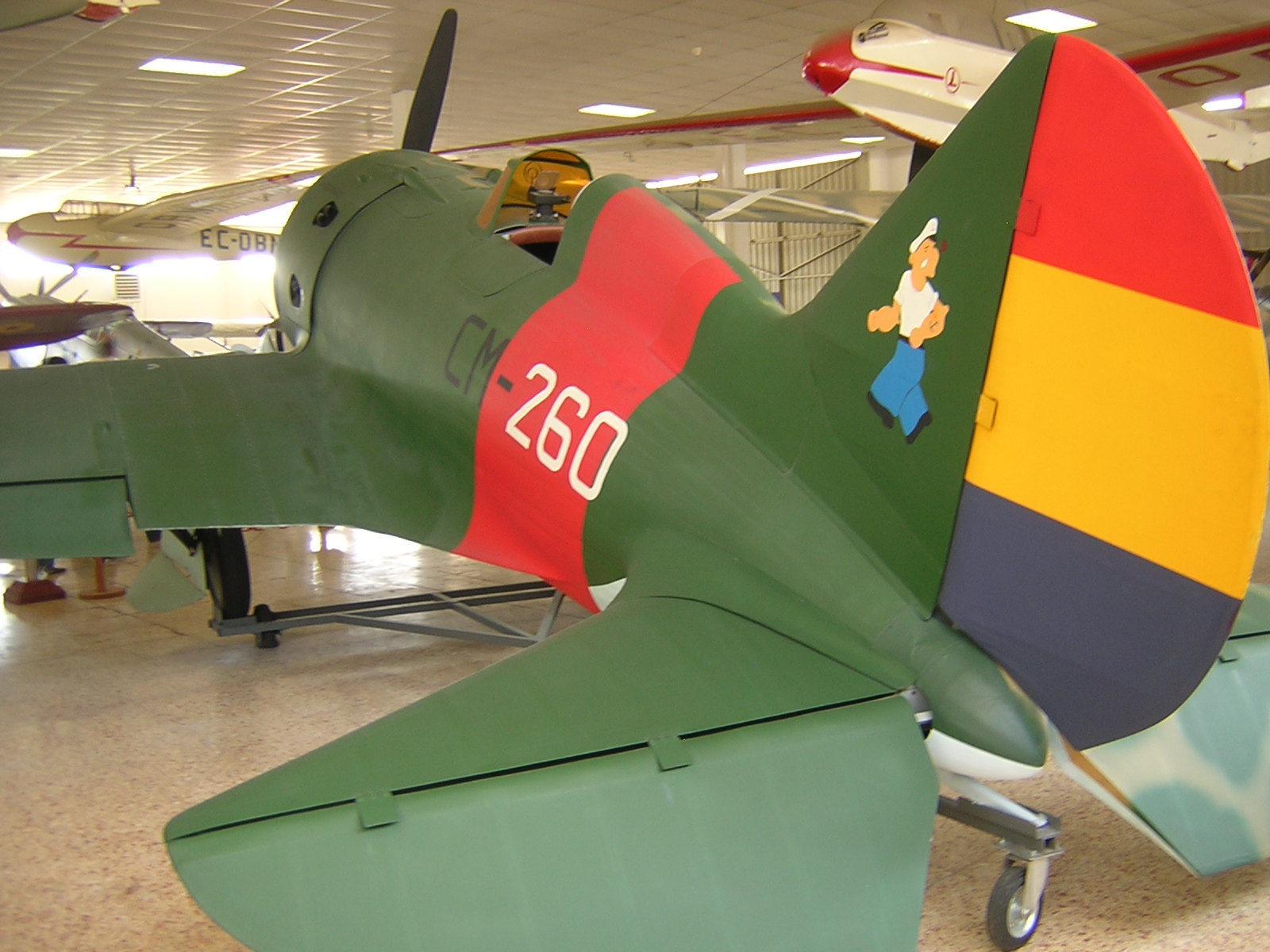|
Victor Talalikhin
Viktor Vasilevich Talalikhin (; 18 September 1918 – 27 October 1941) was a Soviet lieutenant and aviator during the Winter War and World War II and a Hero of the Soviet Union, among the first to perform aerial ramming at night. Talalikhin became a fighter pilot in the Soviet Air Forces in the late 1930s, flying the Polikarpov I-153 during the Winter War. He served in the air defense of Moscow during World War II with an aviation regiment of the Soviet Air Defence Forces. He became one of the first Soviet aviation heroes of the war after ramming a German bomber at night with his Polikarpov I-16, but was shot down and killed in late October while flying a Mikoyan-Gurevich MiG-3. Talalikhin claimed three victories during the Winter War and four in the air defense of Moscow. Early life and military career Talalikhin was born on 18 September 1918 in the village of Teplovka in Saratov Governorate to a peasant family. In 1924, he and his family moved to Volsk, where he studied a ... [...More Info...] [...Related Items...] OR: [Wikipedia] [Google] [Baidu] |
Polikarpov U-2
The Polikarpov Po-2 (also U-2, for its initial ''uchebnyy'', 'training', role as a flight instruction aircraft) served as an all-weather multirole Soviet biplane, nicknamed ''Kukuruznik'' (russian: Кукурузник,Gunston 1995, p. 292. NATO reporting name "Mule".) The reliable, uncomplicated design of the Po-2 design made it an ideal trainer aircraft, as well as doubling as a low-cost ground attack, aerial reconnaissance, psychological warfare and liaison aircraft during war, proving to be one of the most versatile light combat types to be built in the Soviet Union.Angelucci and Matricardi 1978, p. 214. As of 1978 it remained in production for a longer period of time than any other Soviet-era aircraft. Production figures for Polikarpov U-2 and Po-2 bombers and trainers combined are between 20,000 and 30,000 [...More Info...] [...Related Items...] OR: [Wikipedia] [Google] [Baidu] |
Proletarsky District, Moscow
Proletarsky (masculine), Proletarskaya (feminine), or Proletarskoye (neuter) may refer to: *Proletarsky District (other), several districts in the countries of the former Soviet Union *Proletarsky Urban Settlement (or ''Proletarskoye Urban Settlement''), several municipal urban settlements in Russia *Proletarsky, Russia (''Proletarskaya'', ''Proletarskoye''), several inhabited localities in Russia *Proletarskyi (''Proletarsky''), an urban-type settlement in Luhansk Oblast, Ukraine *Proletarskaya metro station (other), several metro stations in the cities of the former Soviet Union See also *Proletarsk *Proletariy Proletariy (russian: Пролета́рий) is an urban locality (an urban-type settlement) in Novgorodsky District of Novgorod Oblast, Russia, located at the Nisha River close to its mouth, east of Veliky Novgorod. Municipally, it is incorpo ... * Proletariat (other) {{Disambiguation, geo ... [...More Info...] [...Related Items...] OR: [Wikipedia] [Google] [Baidu] |
Komsomol Direction
The Komsomol direction () or Komsomol travel ticket was a mobilization document of in the Soviet Union issued by a Komsomol committee to a Komsomol member, which directed the member to temporary or permanent shock construction projects or military service. Usually the Komsomol direction was associated with relocation to new, poorly settled remote locations: new construction sites ("Komsomol construction sites", ), army service, etc. The travel ticket appeared as a type of organizational mobilization after the adoption of the Soviet Labor Code. During the 10th five-year plan more than 500,000 young volunteers were assigned to shock construction projects with Komsomol travel tickets. Komsomol organizations formed and directed 100 All-Union squads consisting of 80,000 people. At the construction sites travel tickets recipients earned ''labor days'' (russian: трудодни, translit=trudodni, label=none), which were assigned different values that depended on the type of work was ... [...More Info...] [...Related Items...] OR: [Wikipedia] [Google] [Baidu] |
Mikoyan Meat Processing Plant
Russian Aircraft Corporation "MiG" (russian: Российская самолётостроительная корпорация „МиГ“, Rossiyskaya samolyotostroitel'naya korporatsiya "MiG"), commonly known as Mikoyan and MiG, was a Russian aerospace and defence company headquartered in Begovoy District, Moscow. Mikoyan was successor to the Soviet Mikoyan and Gurevich Design Bureau (Микоя́н и Гуре́вич, МиГ; OKB-155 design office prefix ''MiG'') founded in 1939 by aircraft designers Artem Mikoyan and Mikhail Gurevich. Mikoyan were notable for their fighter and interceptor aircraft which became a staple of the Soviet Air Force and Russian Air Forces, nations within the Soviet sphere of influence, and other nations such as India and many Arab states. Mikoyan aircraft were frequently used in aerial confrontations with American and allied forces during and since the Cold War, and have become commonly featured aircraft in popular culture. Mikoyan aircra ... [...More Info...] [...Related Items...] OR: [Wikipedia] [Google] [Baidu] |
Volsk
Volsk (russian: Вольск) is a town in Saratov Oblast, Russia, located on the right bank of the Volga River, opposite the mouth of the Bolshoy Irgiz (a tributary of the Volga), northeast from Saratov, the administrative center of the oblast. As of the 2010 Census, its population was 66,508. History It was founded in 1699 as the '' sloboda'' of Malykovka () and was granted town status and renamed Volgsk () in 1780. In the 19th century, the name gradually changed to a more pronounceable "Volsk". After the October Revolution of 1917, Volsk became a major center of cement production. Administrative and municipal status Within the framework of administrative divisions, Volsk serves as the administrative center An administrative center is a seat of regional administration or local government, or a county town, or the place where the central administration of a commune is located. In countries with French as administrative language (such as Belgium, Lu ... of Volsky ... [...More Info...] [...Related Items...] OR: [Wikipedia] [Google] [Baidu] |
Mikoyan-Gurevich MiG-3
The Mikoyan-Gurevich MiG-3 (russian: Микоян и Гуревич МиГ-3) was a Soviet fighter-interceptor used during World War II. It was a development of the MiG-1 by the OKO (opytno-konstruktorskij otdel — Experimental Design Department) of Zavod (Factory) No. 1 in Moscow to remedy problems found during the MiG-1's development and operations. It replaced the MiG-1 on the production line at Factory No. 1 on 20 December 1940 and was built in large numbers during 1941 before Factory No. 1 was converted to build the Ilyushin Il-2. On 22 June 1941, at the beginning of Operation Barbarossa, some 981 were in service with the Soviet Air Forces (VVS), the Soviet Air Defence Forces (PVO) and Soviet Naval Aviation. The MiG-3 was difficult to fly in peacetime and much more so in combat. Originally designed as a high-altitude fighter-interceptor, combat over the Eastern Front was generally at lower altitudes, where it was inferior to the German Messerschmitt Bf 109 as well as mos ... [...More Info...] [...Related Items...] OR: [Wikipedia] [Google] [Baidu] |
Polikarpov I-16
The Polikarpov I-16 (russian: Поликарпов И-16) is a Soviet single-engine single-seat fighter aircraft of revolutionary design; it was the world's first low-wing cantilever monoplane fighter with retractable landing gear to attain operational status and as such "introduced a new vogue in fighter design".Green, William. "Polikarpov's Little Hawk". ''Flying Review'', November 1969. The I-16 was introduced in the mid-1930s and formed the backbone of the Soviet Air Force at the beginning of World War II. The diminutive fighter, nicknamed "''Ishak''" or "''Ishachok''" (" donkey" or "burro") by Soviet pilots, figured prominently in the Second Sino-Japanese War,Liss 1966, p. 10. the Battle of Khalkhin Gol, Winter War and the Spanish Civil War – where it was called the (" rat") by the Nationalists or (" fly") by the Republicans. The Finns called the aircraft as "( flying squirrel)". Design and development While working on the Polikarpov I-15 biplane, Ni ... [...More Info...] [...Related Items...] OR: [Wikipedia] [Google] [Baidu] |
Soviet Air Defence Forces
The Soviet Air Defence Forces (russian: войска ПВО, ''voyska protivovozdushnoy oborony'', ''voyska PVO'', ''V-PVO'', lit. ''Anti-Air Defence Troops''; and formerly ''protivovozdushnaya oborona strany'', ''PVO strany'', lit. ''Anti-Air Defence of the Country'') was the air defence branch of the Soviet Armed Forces. Formed in 1941, it continued being a service branch of the Russian Armed Forces after 1991 until it was merged into the Air Force in 1998. Unlike Western air defence forces, V-PVO was a branch of the military unto itself, separate from the Soviet Air Force (VVS) and Air Defence Troops of Ground Forces. During the Soviet period it was generally ranked third in importance of the Soviet services, behind the Strategic Rocket Forces and the Ground Forces. History Service during Second World War Preparations for creation of the air defence forces started in 1932, and by the beginning of Operation Barbarossa, June 1941, there were 13 PVO zones within the military ... [...More Info...] [...Related Items...] OR: [Wikipedia] [Google] [Baidu] |
Moscow
Moscow ( , US chiefly ; rus, links=no, Москва, r=Moskva, p=mɐskˈva, a=Москва.ogg) is the capital and largest city of Russia. The city stands on the Moskva River in Central Russia, with a population estimated at 13.0 million residents within the city limits, over 17 million residents in the urban area, and over 21.5 million residents in the metropolitan area. The city covers an area of , while the urban area covers , and the metropolitan area covers over . Moscow is among the world's largest cities; being the most populous city entirely in Europe, the largest urban and metropolitan area in Europe, and the largest city by land area on the European continent. First documented in 1147, Moscow grew to become a prosperous and powerful city that served as the capital of the Grand Duchy that bears its name. When the Grand Duchy of Moscow evolved into the Tsardom of Russia, Moscow remained the political and economic center for most of the Tsardom's history. Whe ... [...More Info...] [...Related Items...] OR: [Wikipedia] [Google] [Baidu] |
Polikarpov I-153
The Polikarpov I-153 ''Chaika'' (Russian ''Чайка'', "Seagull") was a late 1930s Soviet biplane fighter. Developed as an advanced version of the I-15 with a retractable undercarriage, the I-153 fought in the Soviet-Japanese combats in Mongolia and was one of the Soviets' major fighter types in the early years of the Second World War. Three I-153s are still flying. Design and development In 1937, the Polikarpov design bureau carried out studies to improve on the performance of its I-15 and I-15bis biplane fighters without sacrificing manoeuvrability, as Soviet tactical doctrine was based on a mix of high performance monoplane fighters (met by the Polikarpov I-16) and agile biplanes.Gordon and Dexter 1999, p. 124. Early combat experience from the Spanish Civil War had shown that the I-16 had problems dealing with the Fiat CR.32 biplanes used by the Italian forces supporting the Nationalists, which suggested a need to continue the use of biplane fighters, and as a result, ... [...More Info...] [...Related Items...] OR: [Wikipedia] [Google] [Baidu] |



.jpg)


